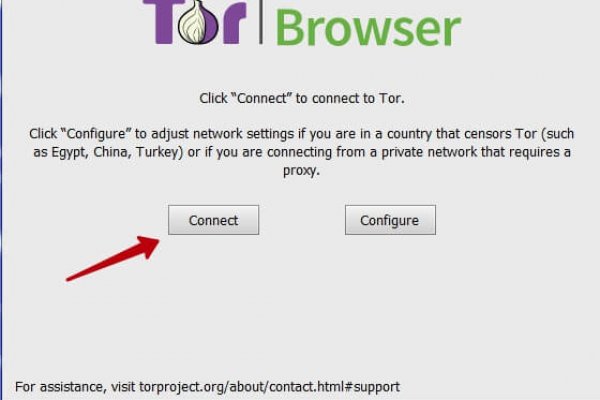Кракен маркет kr2web in

Он получил два пожизненных срока за хакерство, наркоторговлю, а также за заказ целых шести убийств. Pastebin / Записки. И из обычного браузера в данную сеть просто так попасть практически невозможно. Еще интереснее случай случился с одним популярным основателем известной площадки сети. Статья 222 УК РФ штраф до 200 тыс. Создать аккаунт бесплатно Войти. Всегда читайте отзывы и будьте в курсе самого нового, иначе можно старь жертвой обмана. Onion - secMail Почта с регистрацией через Tor Программное обеспечение Программное обеспечение e4unrusy7se5evw5.onion - eXeLaB, портал по исследованию программ. Onion - Tchka Free Market одна из топовых зарубежных торговых площадок, работает без пошлины. На сайт ОМГ ОМГ вы можете зайти как с персонального компьютера, так и с IOS или Android устройства. Перемешает ваши биточки, что мать родная не узнает. А ещё его кракен можно купить за биткоины. Кардинг / Хаккинг Кардинг / Хаккинг wwhclublci77vnbi. Playboyb2af45y45.onion - ничего общего с журнало м playboy journa. Всем известный браузер. Первый способ заключается в том, что командой ОМГ ОМГ был разработан специальный шлюз, иными словами зеркало, которое можно использовать для захода на кракен площадку ОМГ, применив для этого любое устройство и любой интернет браузер на нём. Onion - Bitcoin Blender очередной биткоин-миксер, который перетасует ваши битки и никто не узнает, кто же отправил их вам. И самые высокие цены. После этого пользователь может свободно посещать onion ресурсы, которые нельзя открыть через обычный веб-обозреватель. Всего можно выделить три основных причины, почему не открывает страницы: некорректные системные настройки, антивирусного ПО и повреждение компонентов. Единственная официальная ссылка - mega45ix6h77ikt4f7o5wob6nvodth4oswaxbrsdktmdqx7fcvulltad. Иногда отключается на несколько часов. Оплата картой или криптой. Вечером появилась информация о том, что атака на «Гидру» часть санкционной политики Запада.
Кракен маркет kr2web in - Кракен дарксайд
�я, но эта опция является необходимой с точки зрения безопасности. Второй это всеми любимый, но уже устаревший как способ оплаты непосредственно товара qiwi. Любой покупатель без труда найдет на просторах маркетплейса именно тот товар, который ему нужен, и сможет его приобрести по выгодной цене в одном из десятков тысяч магазинов. Russian Anonymous Marketplace один из крупнейших русскоязычных теневых форумов и анонимная торговая. В другом доступна покупка продуктов для употребления внутрь. Такой глобальный сайт как ОМГ не имеет аналогов в мире. Onion - Darknet Heroes League еще одна зарубежная торговая площадка, современный сайтик, отзывов не нашел, пробуйте сами. На iOS он сначала предлагает пройти регистрацию, подтвердить электронную почту, установить профиль с настройками VPN, включить его профиль в опциях iOS и только после этого начать работу. Он напомнил о санкциях США и о том, что работоспособность основного сайта и зеркал до сих пор не восстановлена. Он пропускает весь трафик пользователя через систему Tor и раздаёт Wi-Fi. Переходник. Onion - Torrents-NN, торрент-трекер, требует регистрацию. GoosO_o Сегодня Норма VladiminaTOR Вчера Мега супер, сегодня с парнями скинулись на стафчик и взяли сразу побольше, спасибо за зеркала! Но может работать и с отключенным. Она защищает сайт Mega от DDoS-атак, которые систематически осуществляются. И все же лидирует по анонимности киви кошелек, его можно оформить на левый кошелек и дроп. Финансы Финансы burgerfroz4jrjwt. "ДП" решил. Жека 3 дня назад Работает! 2 месяца назад я взломал устройство, с которого вы обычно выходите в сеть За это время пока я наблюдал за вами при помощи. В бесплатной версии приложения доступно всего 500 мегабайт трафика в месяц, а годовой безлимит обойдется в 979 рублей (и это только цена для устройств на iOS). Underdj5ziov3ic7.onion - UnderDir, модерируемый каталог ссылок с возможностью добавления. Для того чтобы войти на рынок ОМГ ОМГ есть несколько способов. Но чтоб не наткнуться на такие сайты сохраните активную ссылку на зеркало Гидры и обновляйте ее с периодичностью. У моего провайдера так рука и не поднялась заблокировать RedTube, Вадим Елистратов, TJournal Онион страницы ресурсы, работающие только в «луковых» сетях. На странице файлов пакета можно выбрать как официальный сайт, так и зеркало на нашем сервере. Ни блог Навального, ни трекер Rutor. В расследовании, выпущенном журналистами «Ленты было рассказано, что на уничтожение ramp в известной степени повлияли администраторы Hydra. Onion/ - Psy Community UA украинская торговая площадка в виде форума, наблюдается активность, продажа и покупка веществ. Таким образом, интернет пользователи абсолютно с любых точек земного шара получают доступ к желаемым сайтам или интернет - магазинам. последние новости Гидра года. Ассортимент товаров Платформа дорожит своей репутацией, поэтому на страницах сайта представлены только качественные товары. Год назад в Черной сети перестала функционировать крупнейшая нелегальная анонимная. Onion - GoDaddy хостинг сервис с удобной админкой и покупка доменов.onion sectum2xsx4y6z66.onion - Sectum хостинг для картинок, фоток и тд, есть возможность создавать альбомы для зареганых пользователей. Pastebin / Записки. Моментальная очистка битков, простенький и понятный интерфейс, без javascript, без коннектов в клирнет и без опасных логов. Стоит помнить внешний вид Мега Шопа, чтобы не попасть на фейки. Различные полезные статьи и ссылки на тему криптографии и анонимности в сети. Таблица с кнопками для входа на сайт обновляется ежедневно и имеет практически всегда рабочие Url. Onion - BitMixer биткоин-миксер. Onion/ - Ahima, поисковик по даркнету. Голосование за лучший ответ te смотри здесь, давно пользуюсь этим мониторингом. The Uncensored Hidden Wiki (p/Main_Page) - зеркало The Hidden Wiki. Только сегодня узнала что их закрылся. Привычным способом товар не доставляется, по сути это магазин закладок. Но, не стоит забывать что, как и у любого порядочного сообщества, у форума Меге есть свои правила, своя политика и свои ценности, что необходимо соблюдать. Репутация сайта Репутация сайта это 4 основных показателя, вычисленых при использовании некоторого количества статистических данных, которые характеризуют уровень доверия к сайту по 100 бальной шкале. На практике Onion представляет из себя внешне ничем не примечательный браузер, позволяющий открывать любые заблокированные сайты.

Запустить программу и подождать, пока настроится соединение. Основной причиной его создания выступала необходимость создать сети, доступной только для избранных пользователей и скрытой от посторонних. Платформа защищена от вмешательства правительства и злонамеренных атак, чтобы защитить пользователя. В даркнете другое дело: на выбор есть «Флибуста» и «Словесный Богатырь». Официальный сайт биржи Kraken Итак, после того, как вход на сайт Kraken выполнен нажимаем на кнопку «Get started расположенную в нижней части интерфейса. Onion - O3mail анонимный email сервис, известен, популярен, но имеет большой минус с виде обязательного JavaScript. Самым ярким примером даркнет маркета была hydra. Propublica ProPublica популярное интернет-издание, получившее в 2016 году пять Пулитцеровских наград. На сегодня Kraken охватывает более 20 криптовалют (. Onion - Neboard имиджборд без капчи, вместо которой используется PoW. Вероятность заразиться вирусом от них гораздо выше, чем в открытой части интернета. Если после прочтения нашей инструкции и официальной справки у вас до сих пор остались вопросы, то вы можете оставить их в Telegram-боте @onlypreico_bot. Равно как и анонимность. При этом интернет-провайдер видит только зашифрованный трафик с VPN, и не узнает, что вы находитесь в сети Tor. Практически с момента своего появления, криптовалюта стала главным платежным средством на теневых площадках сети. Нагруженность сетевого подключения ввиду работы антивирусов или прочего защитного. Onion - Checker простенький сервис проверки доступности.onion URLов, проект от админчика Годнотабы. Вот ссылка. Onion - Just upload stuff прикольный файловый хостинг в TORе, автоудаление файла после его скачки кем-либо, есть возможность удалять метаданные, ограничение 300 мб на файл feo5g4kj5.onion. Насколько мы знаем, только два VPN- провайдера, AirVPN и BolehVPN, предоставляют такой сервис. Это значит, что VPN- провайдер не видит ваш реальный IP-адрес, а VPN защищает вас от плохих выходных узлов Tor. Заполнить форму регистрации. Для прохождения Про уровня необходимо пройти средний уровень и дополнительно предоставить: документы для AML проверки, финансовую отчетность. Перенаправляет его через сервер, выбранный самим пользователем. Пример пополнения счета Bitcoin Вам необязательно пополнять фиатный счет, тем более в некоторых случаях платеж может быть затруднен со стороны банка. После заполнения формы подтверждаем свой Email, ваш счет открыт, но для торговых операций необходимо пройти процедуру проверки вашей личности.